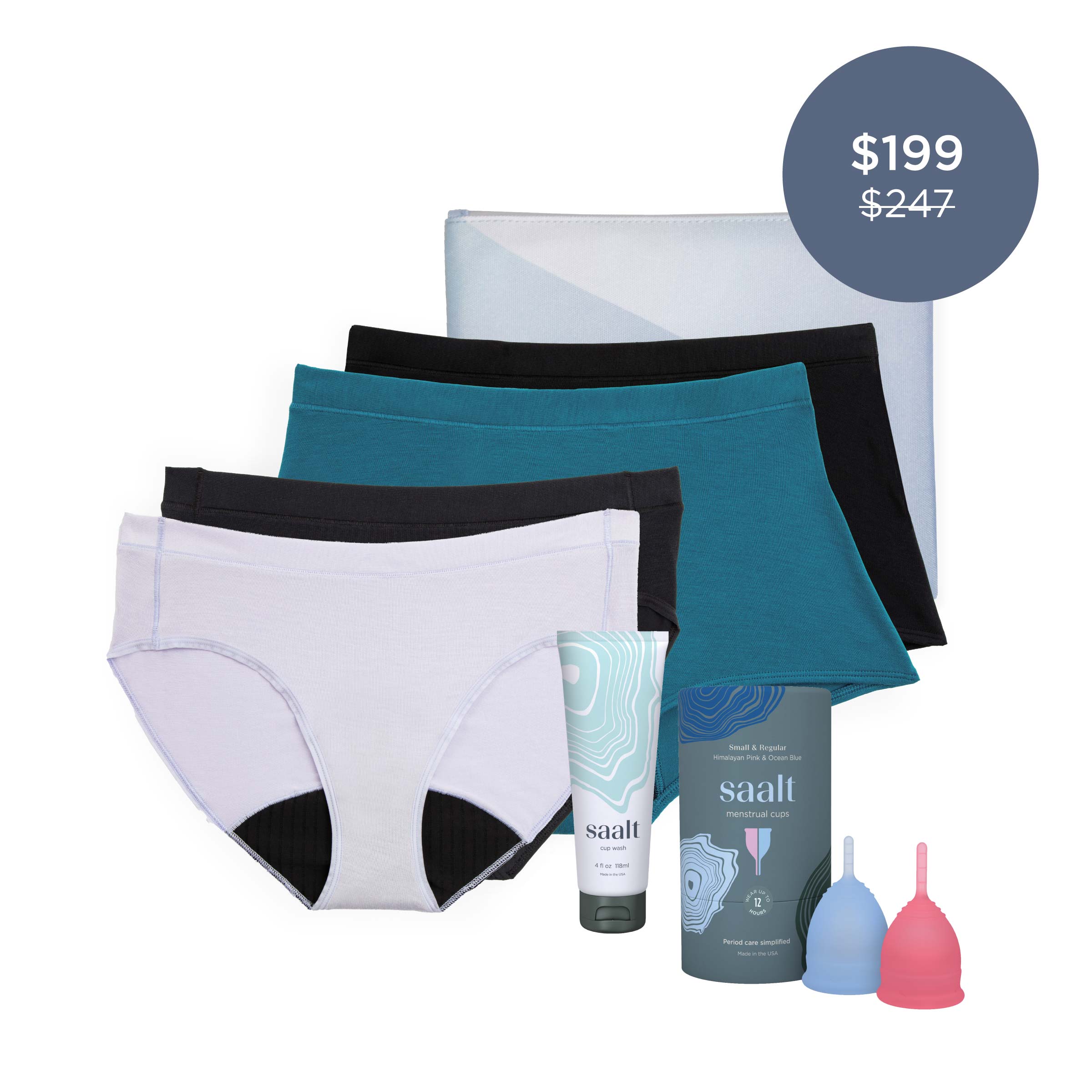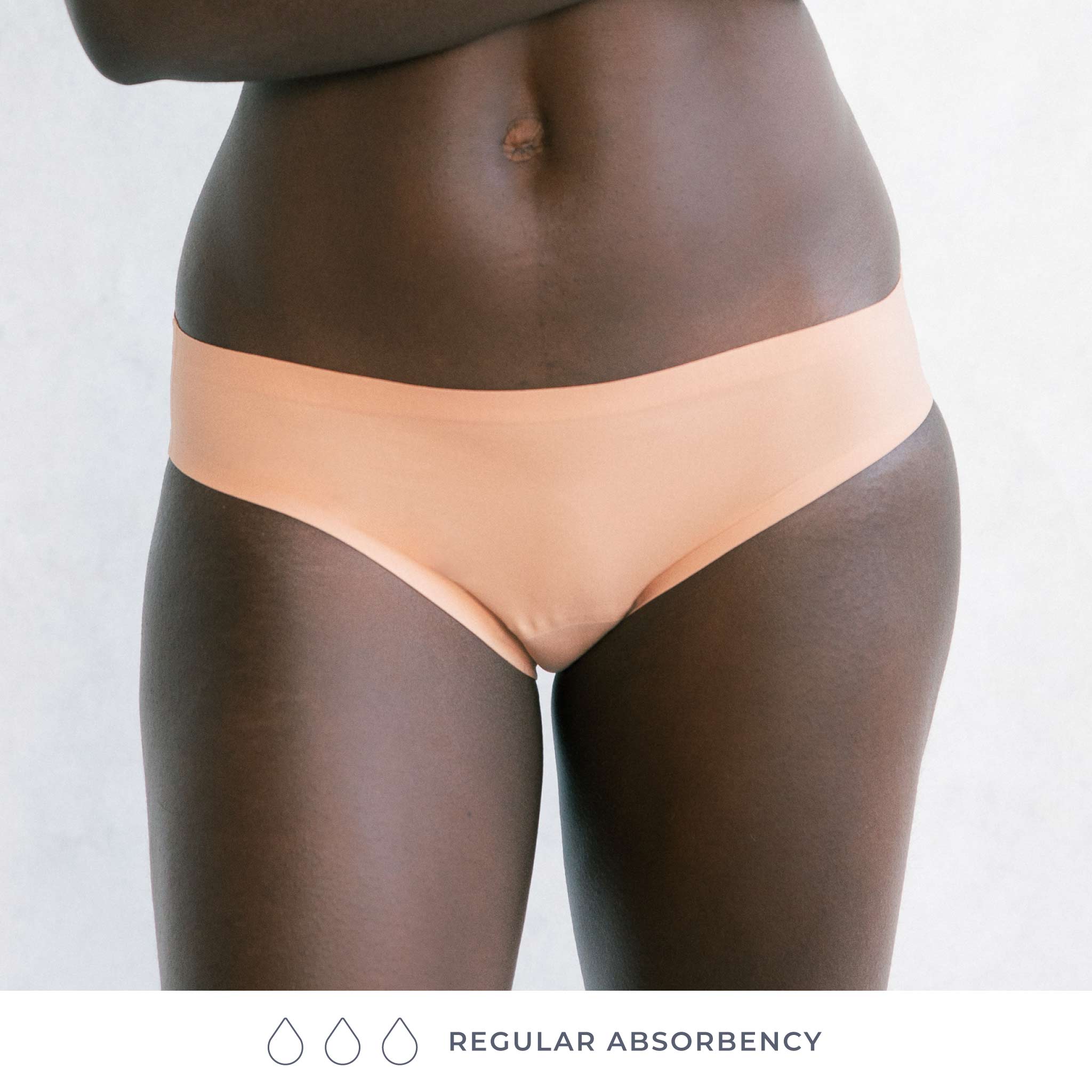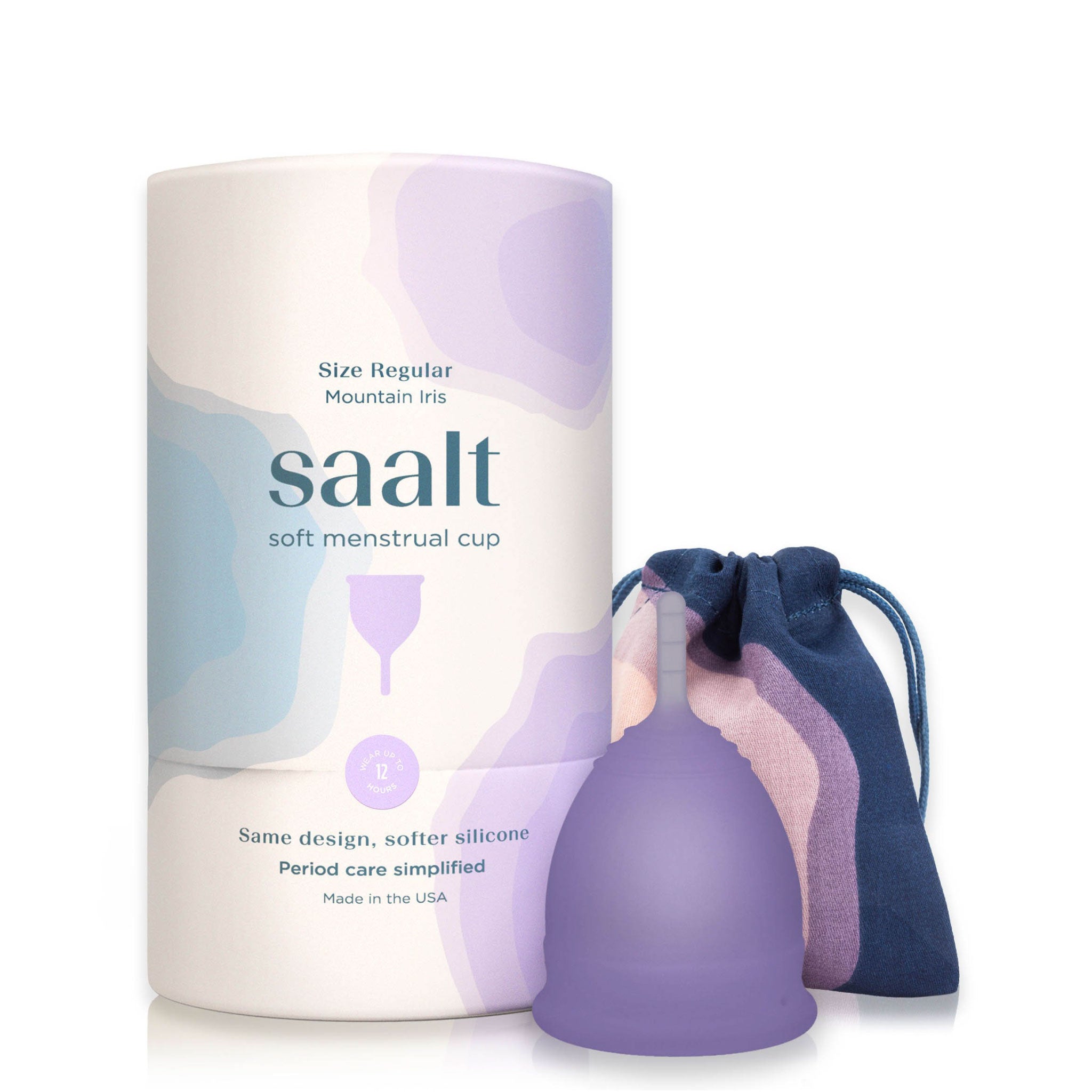Can Menstrual Cups Cause Prolapse?
Prolapse has become a hot topic these days thanks to a recent BBC article sweeping through news outlets and online forums suggesting that menstrual cup misuse can cause pelvic organ prolapse. Without context, the claim could easily send those considering making the switch to cups running back to the tampon aisle.
At Saalt, we love to dive into a topic, because hey, improving menstrual health is kind of our thing ;). We welcome any opportunity to learn, educate, and share informed answers that clear up menstrual misconceptions and help cup users make informed decisions about their bodies. So, we sought the expert advice of a board certified women's health physical therapist, Dr. Marcy Crouch, @thedowntheredoc, to shed some light on the subject.

What exactly is your pelvic floor?
First, let's get to know our pelvic floor. Dr. Crouch explained that the pelvic floor is the floor of the core that is made up of a basket of muscles that run from front to back and side to side. These muscles actively engage to support your internal pelvic organs, including the uterus, vagina, bladder, urethra, and rectum.
A healthy pelvic floor allows us to easily control our urine flow, have comfortable bowel movements, and lift without injury. However, a weakened pelvic floor can lead to a condition called prolapse.
What is pelvic organ prolapse and how does it happen?
According to Harvard Medical School, pelvic organ prolapse happens when the pelvic floor muscles weaken, causing one or more of the pelvic organs to fall downward into or out of the vagina. There are three types of prolapse: uterine, bladder, and rectal which are diagnosed at varying degrees on a scale from 0-4. Researchers at the University of Chicago clarify that prolapse ... is very common, with about 50 percent of women having some degree of prolapse.
There are many factors that contribute to why this occurs, the most obvious being childbirth. However, Dr. Crouch told us that she sees prolapse in individuals who have not had babies, but have had chronic constipation, and therefore push or bear down to evacuate bowels, or in those who have chronic respiratory issues. She further explained that there is also a genetic component to prolapse and how your tissues and collagen respond to load. Some people are more susceptible due to the genetic makeup of their tissues.
So, what do menstrual cups have to do with prolapse?
In the BBC's article, the claim was made that the motion of bearing down on your cup for removal could weaken the pelvic floor and result in prolapse. We feel it's important to mention that currently, there are no peer-reviewed studies that show a direct correlation to menstrual cup use and prolapse, but let's delve into their claims, as well as what Dr. Crouch has to say about it.
For most cup users, their vaginal canal is short enough to where their cup is easily within reach without the need to bear down for removal. However, some users with a high cervix find that their cup moves up to a height where it is difficult to remove, and find themselves straining as they bear down to move their cup within reach.
When asked about this, Dr. Crouch explained that repeated, prolonged bearing down beyond what you would do to begin an easy bowel movement, or release gas, can compromise the health of a cup user's pelvic floor. A better alternative would be going into a position like a deep squat, or even, 'Happy Baby' pose, to encourage lengthening of the pelvic floor instead of pushing. This may also increase space in the vaginal canal and may assist in removal. All this can be done without bearing down.
Further, she says that if bearing down is necessary, she would instruct them to do it with an open throat. Doing so allows for a pressure exchange to take place that decreases the force on your pelvic floor, while allowing you to safely move your cup lower.
However, we know that many people with a high cervix struggle with removal. If this is you, then a longer cup may be a better option, and your Saalt Cup may be a better fit for days when your cervix moves lower.
What to do if you suspect that you have prolapse
We love that, once again, cups are bringing more awareness to yet another issue that many people who menstruate experience and too often remain silent about. If you suspect that you have prolapse or are worried about whether or not your unique anatomy is compatible with a cup, please consult your doctor or a pelvic floor therapist.
Here are some helpful tips to protect the health of your pelvic floor when removing your cup.
- Always pinch the base or body of the cup to break the seal during removal.
- If you're struggling to reach your cup, stay relaxed and get your knees above your hips in a deep squat, with your feet on a stool while sitting on the toilet, or lying on the floor on your side.
- Breathe with an open mouth and relaxed throat (like you're fogging up a mirror).
- Stay calm and visualize your pelvic muscles relaxing and opening to allow more space to reach your cup.
- If bearing down is necessary, do so gently, as if releasing gas or having an easy bowel movement.
Other claims
Last, it's important to address the claims made in the article about the regulation of menstrual cups. Due to the momentum being gained within the world of sustainable period care, there are now hundreds of cup brands available to consumers online, and many of them are not regulated by health agencies in their country of origin.
Because cups are medical devices, it is important to ensure that any cup you purchase is certified by a reputable governing body. For example, Saalt is FDA registered and compliant and Health Canada approved. This means that we are continually working to ensure the safety and efficacy of our products, as well as the educational resources we provide.
Every body is uniquely beautiful and different, and we love that the conversation around sustainable period care continues to push us to learn how to care for our bodies in a healthier way.
Have a question you'd like answered on our blog? We'd love to hear it at sayhey@saalt.com.





